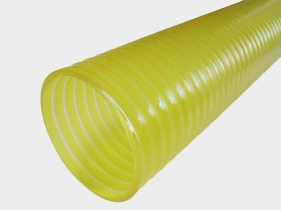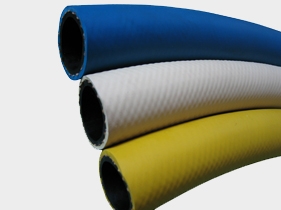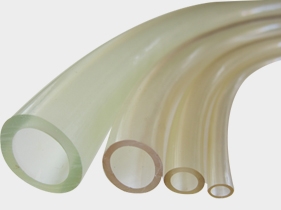
1. The use of protection cannot be ignored: the long-term use of high-pressure sand blasting hose joints at home usually does not cause concern, but excessive use and improper protection also buried the hidden danger of joint cracking to a certain extent. It is understood that the service life of the joint is usually 200000 times, and it should be replaced after long-term use. When using the side, Cord hose company Care should be taken to close and open as gently as possible and not to rotate the knob of the hose connector repeatedly. 2. Differentiation of quality can be based on standard evidence collection. It is understood that it is still difficult to determine the cause of joint cracking. At present, the National Bureau of Technology and Quality Supervision has issued recommendations for sealing nozzles and hose specifications. These two specifications perfectly adjust the quality specification target of connectors and hoses. Consumers can go to the quality inspection department to check the torsional strength of the connecting hose, the tightness of the connecting spool and the strength of the connecting materials. If the content of standard rules cannot be met, it will be attributed to quality problems, which can serve as a strong basis for expression. 3. The appearance of hose connector is difficult to distinguish between good and bad. In order to pursue profits and reduce costs, many manufacturers currently use selected cast iron (easy to rust) and zinc alloy (non anti-corrosion) as materials to produce high-pressure sand blasting hose joints, which causes product quality problems. It is understood that the quality of connectors and hoses is not up to standard, Linyi Cord hose The strength function and sealing function of high-pressure sand blasting hose joints are not up to standard due to problems such as materials and wall thickness, which should be paid attention to by consumers.

Linyi Cord hose Structure type of product: sand blasting hose is mainly composed of liquid resistant inner rubber layer, middle rubber layer, 2 or 4 or 6 layers of steel wire winding reinforcement layer and outer rubber layer. The inner rubber layer has the function of bearing the pressure of the transmission medium and protecting the steel wire from erosion, the outer rubber layer protects the steel wire from damage, and the steel wire (0.3-2.0 steel wire) layer is the reinforced skeleton material. Application of sandblasting hose products: high-pressure sandblasting hose is mainly used for mining hydraulic support and oil field exploitation, and is suitable for engineering construction, lifting and transportation, metallurgical forging, mining equipment, ships, injection molding machinery, agricultural machinery, various machine tools, and mechanical and automatic hydraulic systems in various industrial sectors to transport petroleum base under certain pressure (higher pressure) and temperature. (such as mineral oil, soluble oil, hydraulic oil, fuel oil, lubricating oil) and water-based liquid (such as emulsion, oil-water emulsion, water). And liquid transmission. The working withstand voltage can reach 70-100 MPa. The company's sand blasting hose standards refer to national standards/T10544-03, DIN 20023, and SaE100 R9-13. Cord hose company Made of special synthetic rubber, it has excellent oil resistance, heat resistance and aging resistance. The rubber hose has high bearing pressure and superior pulse performance. The tube body is tightly combined, soft to use, and has little compression deformation. The hose has excellent bending resistance and fatigue resistance. The sandblasting hose is 20m long and can be made within 50m as required.

Linyi Cord hose It is one of the most common rubber products in life, used to transport various gases and liquids. Natural rubber, synthetic rubber and reclaimed rubber in rubber products can be used for the consumption of rubber sand blasting pipes. When reclaimed rubber is used to consume odorless rubber sand blasting pipe, care must be taken in selecting reclaimed rubber and formula design to meet the performance requirements of odorless rubber sand blasting pipe. When using recycled rubber to consume odorless rubber sand blasting hose, what problems should we pay attention to? The selection of reclaimed rubber for odorless rubber sandblasting hose is the basis for determining the quality of rubber, whether it is environmental protection rubber products or various odorless rubber products. When using reclaimed rubber to consume odorless hose, choosing odorless reclaimed rubber is the top priority. Application of odorless reclaimed latex, odorless reclaimed tire rubber, odorless reclaimed nitrile rubber and odorless reclaimed ethylene propylene rubber in reclaimed rubber products. The odorless butyl reclaimed rubber can be used for the consumption of odorless rubber sandblasting pipes. In addition, odorless hb isoprene reclaimed rubber can also be used for consumption of odorless rubber sandblasting pipes. In actual consumption, the raw materials of odorless isoprene reclaimed rubber (PP reclaimed rubber) are isoprene unvulcanized composite rubber and isoprene bottle stopper. They have strong viscosity, aging resistance and temperature resistance, and are ideal for odorless hose consumption to ensure quality and reduce costs. Pay attention to the vulcanization of odorless rubber sand blasting pipe. as everyone knows, Cord hose company The design of vulcanization system of reclaimed rubber products directly affects the quality of rubber products, and the odorless rubber sand blasting pipe of reclaimed rubber is no exception. When using reclaimed rubber to consume odorless rubber sand blasting pipe products, vulcanizing agent, accelerator and other additives must be combined with odorless additives such as accelerator STT and accelerator D; When vulcanizing the rubber of odorless rubber sand blasting pipe, it is better to vulcanize at low temperature for a long time, which will cause full reaction to the rubber.

Linyi high quality Cord hose Plays an important role. In the application of different industries, according to their own needs, check the performance of the products, give proper play to the advantages of the products, and ensure the normal use of daily applications. When replacing the wear-resistant sand blasting pipe, the length of the rubber pipe, the number of steel wire layers, the shape and size of the joint should be reasonable, and the curvature of the rubber pipe should be minimized. When tightening the connecting nuts, do not tighten the rubber hose. Excessive bending and twisting will greatly reduce the service life of the rubber hose. Protective measures shall be taken for the parts liable to friction to prevent the rubber hose from bursting due to wear. What should we pay attention to when purchasing wear-resistant sandblasting pipe? Different types of wear-resistant sand blasting pipes have different working pressures. When purchasing rubber hose, you should first determine the working pressure of the system, Cord hose company Then select the equivalent working pressure of the hose. If the system is often affected by pressure, it is necessary to increase the working pressure of the hose and choose the hose with higher pulse life. The inner diameter of wear-resistant sand blasting pipe is one of the factors to be considered when selecting rubber hose. The small inner diameter will increase the flow rate of the medium, raise the temperature of the system, reduce the working efficiency, and affect the working performance of the system. The large inner diameter will increase the purchase cost. Therefore, the proper inner diameter should be selected according to the flow rate of the medium. The wear-resistant sand blasting pipe has allowable operating temperature range. The service life and pressure bearing capacity of the rubber pipe can be guaranteed only when it works at an appropriate temperature. When the operating temperature of the equipment exceeds the allowable temperature range of the rubber hose for a long time, special rubber hose shall be purchased or special protective sleeve shall be added on the wear-resistant sand blasting pipe. If the medium to be transported is special, make sure that the hose material is compatible with the medium.






